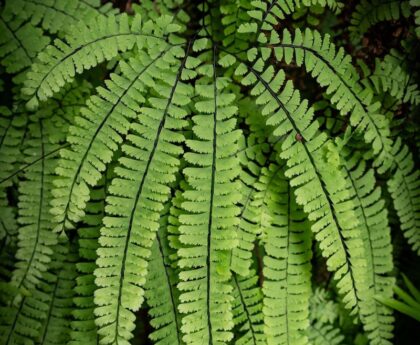Parks Canada Shuts Down Waterbodies and Shorelines in Yoho and Kootenay National Parks due to Whirling Disease
Unprecedented Move to Protect Fish Populations
In a remarkable move, Parks Canada has made the decision to close all waterbodies and shorelines in Yoho and Kootenay national parks following the detection of whirling disease. This deadly disease has the potential to wipe out fish populations and has been spreading to more regions. After the initial discovery of whirling disease in Yoho’s Emerald Lake last month, further sampling and preliminary test results have found suspected cases of the disease in the Kicking Horse River, Wapta Lake, Finn Creek, Monarch Creek, and the confluence of Emerald River and Kicking Horse River.
Justin Brisbane, the aquatic invasive species regional communications officer for the mountain national parks, stated, “As a result, Parks Canada has taken quick and decisive action to protect fish populations in Yoho and Kootenay national parks.” The closure, effective from Thursday, October 26, 2023, until March 31, 2024, aims to prevent the further spread of the disease.
Aquatic Invasive Species Threaten Ecosystems
The closure is a response to the significant threat that aquatic invasive species pose to the health of national parks and vital aquatic ecosystems. These species disrupt and cause irreversible damage to aquatic ecosystems, which in turn affects vulnerable species at risk. Additionally, there is a risk of the disease spreading downstream beyond park boundaries through interconnected river systems.
Whirling disease, named after the circular swimming patterns exhibited by infected fish, can impact various fish species such as bull trout, westslope cutthroat trout, rainbow trout, mountain whitefish, brown trout, and brook trout. The disease is not directly spread between fish but rather through contact between fish and a freshwater worm carrying a parasite. Once the parasites invade the fish’s cartilage, it can cause deformities in the jaws, head, gill cover, body, and result in the tails of infected fish turning black. The disease can also impair nervous tissue, leading to the characteristic whirling swimming behavior.
Preventing Further Spread
The discovery of whirling disease in Yoho National Park is significant, as it marks the first case in both Yoho and the entire province of British Columbia. Previously, the disease had been limited to Banff National Park and Alberta provincial lands after its initial detection in Canada in 2016 in Banff’s Johnson Lake.
In response to the discovery in Johnson Lake, Parks Canada drained the lake and killed all fish to prevent harm to at-risk species like bull trout and westslope cutthroat trout. It is believed that whirling disease was introduced from Europe, with the first detection in the United States dating back to 1958. The disease gained major attention in the 1990s when it led to losses of up to 90% of wild rainbow trout in several streams in Colorado and Montana.
Protecting the Future of Fish Populations
The closure of waterbodies and shorelines in Yoho and Kootenay national parks highlights the importance of proactive measures to protect our ecosystems and the species they support. As whirling disease poses a significant threat to fish populations, it is crucial to prevent its spread and mitigate the potential damage it can cause.
To achieve this, all in-water and shoreline activities are prohibited, and it is against the law to approach or remain within three meters of a river, creek, or lake. Banned shoreline activities include hiking, walking, and cycling, while prohibited water activities encompass fishing, swimming, diving, wading, and the use of any watercraft. However, there are some exceptions to these restrictions. Crossing a lake or river on approved trails, bridges, and fords is permitted. Collecting treatable water for drinking purposes is also allowed. Furthermore, crossing a frozen waterbody or shoreline is permitted, and the use of rental canoes at Emerald Lake is still allowed.
Critical Reflection on Environmental Conservation
The outbreak of whirling disease in Yoho and Kootenay national parks raises important questions about the conservation and management of our natural resources. It serves as a reminder of how human actions can have far-reaching consequences for ecosystems. The disease is believed to have been introduced from outside the region, emphasizing the need for strict regulations and measures to prevent the introduction of invasive species.
Furthermore, this incident underscores the delicate balance in maintaining healthy ecosystems and protecting biodiversity. Whirling disease has the potential to devastate fish populations, disrupting the delicate ecological equilibrium. By taking decisive action to protect these populations, Parks Canada is demonstrating its commitment to preserving our natural heritage.
Advice for Responsible Recreation
While the closure of waterbodies and shorelines may inconvenience individuals looking to engage in recreational activities, it is essential to recognize the importance of adhering to these restrictions. By respecting the closures and restrictions, we can contribute to the preservation of fish populations and the overall health of the ecosystem.
In the face of a situation like this, it becomes crucial for individuals to prioritize responsible recreation. This means understanding and respecting the local regulations and guidelines, practicing appropriate biosecurity measures, and avoiding the introduction or spread of invasive species. By doing so, we can help protect our natural assets and ensure their sustainability for future generations.
In conclusion, the closure of waterbodies and shorelines in Yoho and Kootenay national parks in response to the detection of whirling disease is a necessary step to safeguard fish populations and preserve the ecological integrity of these areas. This incident serves as a reminder of the critical role that proactive environmental conservation measures play in maintaining the health and viability of our ecosystems. It also emphasizes the responsibility of outdoor enthusiasts to engage in responsible recreation and help protect our natural resources.

<< photo by Beyzaa Yurtkuran >>
The image is for illustrative purposes only and does not depict the actual situation.
You might want to read !
- Battle of the Titans: Breaking Down the Tyson Fury vs. Francis Ngannou Showdown
- Battle of the Titans: Tyson Fury vs. Francis Ngannou – A Clash for the Ages
- Breaking: Former Chinese Premier Li Keqiang Passes Away at 68
- Nets Secure Future: Options on Cam Thomas and Day’Ron Sharpe for 2024/25
- Battle of the Bases: Decoding the D-backs vs. Rangers World Series Clash
- Dussehra Celebrations in Canada: Wishes, Messages, and Social Media Impact




